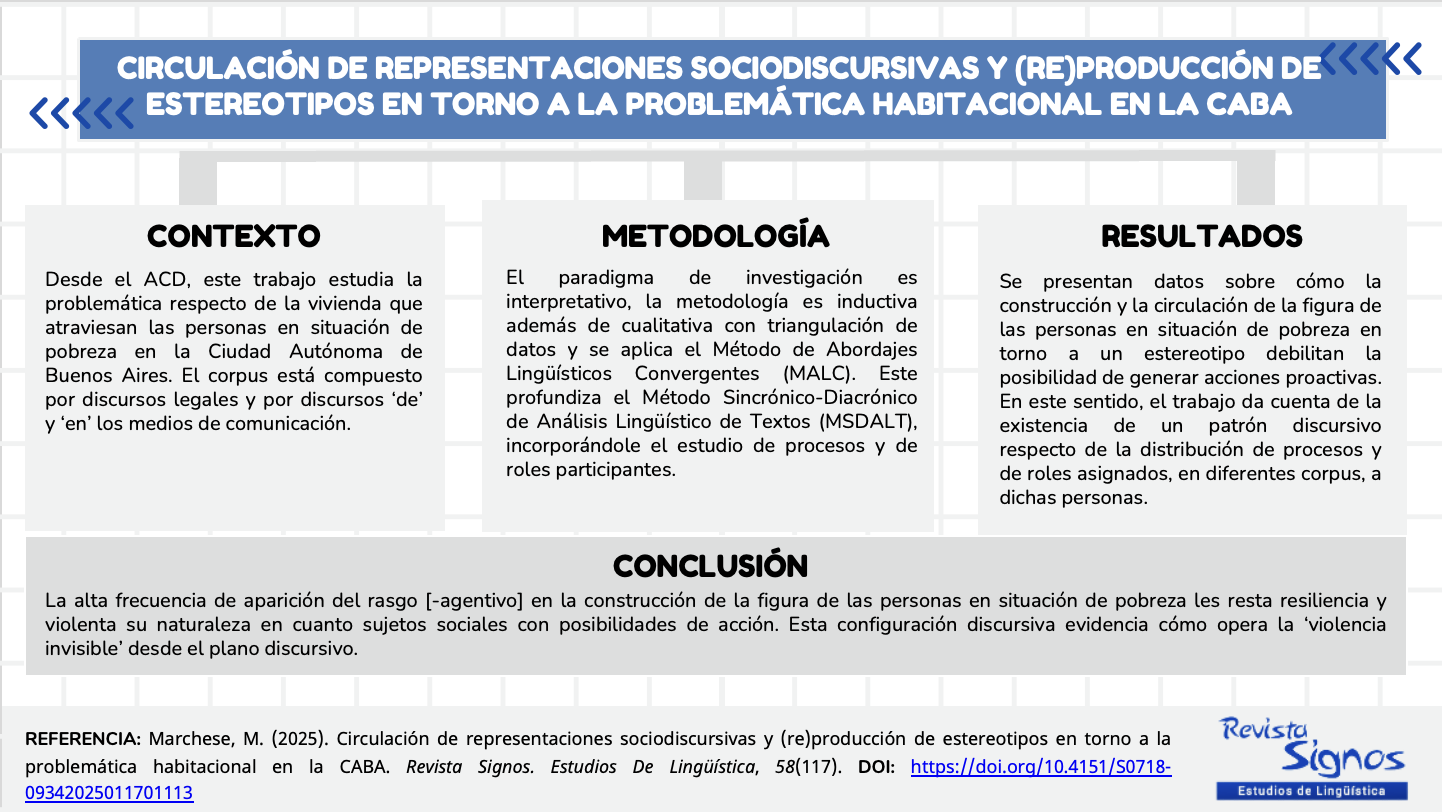Circulation of sociodiscursive representations and (re)production of stereotypes regarding housing issues in Buenos Aires City
DOI:
https://doi.org/10.4151/S0718-09342025011701113Keywords:
Invisibilized violence, Critical Discourse Analysis, Method of Converging Linguistic Approaches.Abstract
The right to housing is one of the most violated in Argentina and it especially affects people living in extreme poverty. This work focuses on this problem within the Autonomous City of Buenos Aires (CABA). The paper studies, linguistically-discursively, how the construction and circulation of stereotypes about said people: a) impact on their possibilities of self-management and resilience, and b) are discursive actions inscribed within the concept of 'invisible violence'. The analyzed corpus is made up of legal discourses, and discourses “of” and “in” the media. All of them, associated with the housing problem of people in situation of extreme poverty who live in CABA. The research paradigm adopted is interpretative, and the approach is Critical Discourse Analysis (CDA). The methodology is inductive and qualitative, with triangulation of data. The Method of Converging Linguistic Approaches was applied, which incorporates the study of processes and participating roles. Regarding these, the results reveal that people in situation of extreme poverty are represented with a linguistic-discursive pattern that reduces their capacity for action, which makes it difficult for them to address the housing problem proactively. Based on these specific data, it is concluded that it is relevant to analyze the discourses that surround this problem in order to collaborate in making more effective and equitable decisions.

Published
How to Cite
Issue
Section
License
Copyright (c) 2025 Revista Signos. Estudios de Lingüística

This work is licensed under a Creative Commons Attribution 4.0 International License.
Copyright agreement:
Authors who have a manuscript accepted for publication in this journal agree to the following terms:
Authors will retain their copyright and grant the journal the right of first publication of their work by means of this copyright agreement document, which is subject to the Creative Commons Acknowledgment License that allows third parties to share the work provided that its author and first publication in this journal are indicated.
Authors may adopt other non-exclusive license agreements for distribution of the published version of the work (e.g., depositing it in an institutional repository or publishing it in a monographic volume) as long as the initial publication in this journal is indicated.
Authors are allowed and encouraged to disseminate their work via the internet (e.g., in institutional publications or on their website) before and during the submission process, which can lead to interesting exchanges and increase citations of the published work (read more here).


